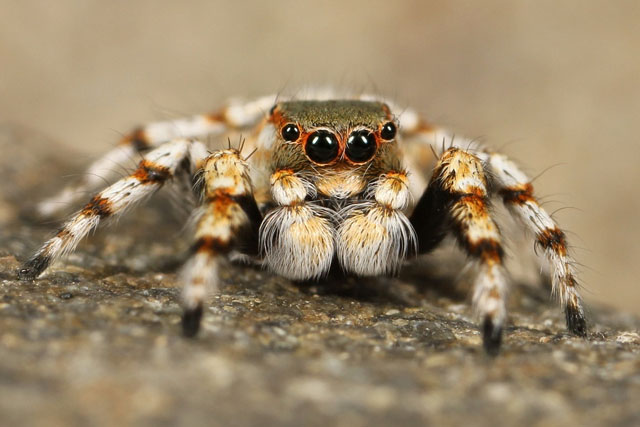



Tarantulas are fascinating creatures that belong to the spider family. They are known for their large size and hairy appearance, which can be both intimidating and intriguing. If you are a proud owner of a tarantula, it is essential to understand their natural diet to ensure their health and well-being.
In the wild, tarantulas are opportunistic predators, meaning they will eat whatever prey they can catch. Their diet primarily consists of insects, such as crickets, grasshoppers, beetles, and cockroaches. However, they have also been known to consume small vertebrates like lizards, frogs, and even small mammals.
When it comes to feeding tarantulas in captivity, replicating their natural diet is crucial. Providing a balanced and nutritious diet will help maintain their overall health and longevity. The most common food source for pet tarantulas is live prey, such as crickets or mealworms.
One of the most debated topics among tarantula owners is whether to feed live prey or pre-killed prey. Both options have their pros and cons, and the choice ultimately depends on the tarantula's species and individual preferences.
Feeding live prey can stimulate the tarantula's natural hunting instincts and provide mental stimulation. It allows them to exhibit their natural behaviors, such as chasing and capturing their prey. However, there is also a risk involved, as live prey can potentially harm or stress the tarantula. In some cases, the prey may even injure or kill the tarantula if it is too large or aggressive.
On the other hand, feeding pre-killed prey eliminates the risk of injury to the tarantula. It also ensures that the prey is of the appropriate size and won't overpower the spider. However, some tarantulas may not be as interested in pre-killed prey since they lack the movement and stimulation of live prey.
Ultimately, it is essential to observe your tarantula's feeding behavior and preferences to determine which option is best for them. Some tarantulas may readily accept pre-killed prey, while others may only show interest in live prey.
When selecting prey for your tarantula, it is crucial to consider their size and species. Tarantulas come in various sizes, ranging from small species like the Pink Toe (Avicularia avicularia) to larger species like the Goliath Birdeater (Theraphosa blondi). The size of the prey should be proportional to the tarantula's body size to prevent any potential harm.
It is also important to provide a varied diet for your tarantula. Offering a variety of prey species will ensure they receive a wide range of nutrients. Some suitable prey options for tarantulas include crickets, mealworms, roaches, locusts, and waxworms. You can also consider supplementing their diet with occasional treats like small feeder fish or pinky mice for larger tarantulas.
The feeding frequency and portion size for tarantulas vary depending on their age, species, and individual metabolism. Younger tarantulas generally require more frequent feedings compared to adults. As a general guideline, you can feed juvenile tarantulas every 2-3 days, while adult tarantulas can be fed once every 7-10 days.
When it comes to portion size, it is crucial not to overfeed your tarantula. Feeding them prey that is too large can lead to digestive issues and obesity. A good rule of thumb is to offer prey that is approximately the same size as the tarantula's abdomen. If the tarantula refuses to eat the prey or shows no interest, it is best to remove it from the enclosure to prevent any potential harm to the spider.
To ensure your tarantula receives a well-rounded diet, it is essential to supplement their prey with calcium and vitamins. Calcium is crucial for their exoskeleton and overall health, while vitamins help support their immune system.
You can provide calcium by dusting the prey with a calcium supplement powder before feeding it to your tarantula. This can be done by placing the prey in a plastic bag with a small amount of calcium powder and gently shaking it to coat the prey. It is important not to overdo the calcium supplementation, as excessive amounts can be harmful to the tarantula.
Vitamin supplements can be added to the tarantula's water source. You can find reptile-specific vitamin supplements that are safe for tarantulas. Follow the instructions on the supplement packaging for the appropriate dosage.
Feeding time can be an exciting event for both you and your tarantula. It is essential to observe their feeding behavior to ensure they are eating properly and to identify any potential issues.
During feeding, your tarantula should exhibit active hunting behavior. They may stalk their prey, pounce on it, and use their fangs to inject venom. If your tarantula shows no interest in the prey or refuses to eat, it could be a sign of stress, illness, or a molt approaching. In such cases, it is best to consult a tarantula expert or veterinarian for further guidance.
While feeding tarantulas may seem straightforward, there are some common mistakes that owners should avoid to ensure their pet's well-being:
1. Overfeeding: Feeding your tarantula too frequently or offering prey that is too large can lead to obesity and digestive issues. Stick to a regular feeding schedule and provide appropriately sized prey.
2. Using toxic prey: Avoid feeding your tarantula prey that has been exposed to pesticides or other harmful chemicals. These substances can be toxic to your pet.
3. Leaving uneaten prey in the enclosure: If your tarantula does not eat the prey within a reasonable time, remove it from the enclosure to prevent any potential harm to the spider.
4. Neglecting calcium and vitamin supplementation: Tarantulas require calcium and vitamins to maintain their health. Ensure you are providing appropriate supplements to their diet.
If you are a new tarantula owner or have any concerns about your pet's diet, it is always a good idea to consult a tarantula expert or veterinarian. They can provide valuable guidance and ensure that you are providing the best care for your pet spider.
Feeding a tarantula requires a good understanding of their natural diet and individual preferences. Whether you choose to feed live prey or pre-killed prey, it is important to provide a varied and balanced diet. Remember to observe your tarantula's feeding behavior, avoid common mistakes, and consult an expert if needed. By following these guidelines, you can ensure that your pet tarantula remains healthy and happy for years to come.
Leave a Reply
Related posts